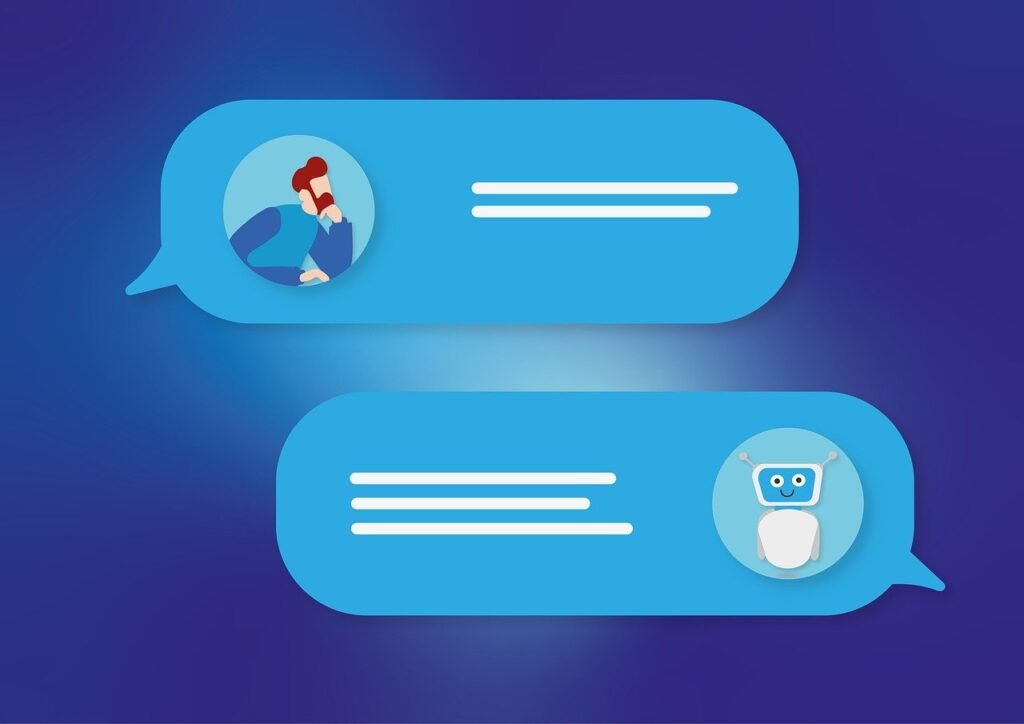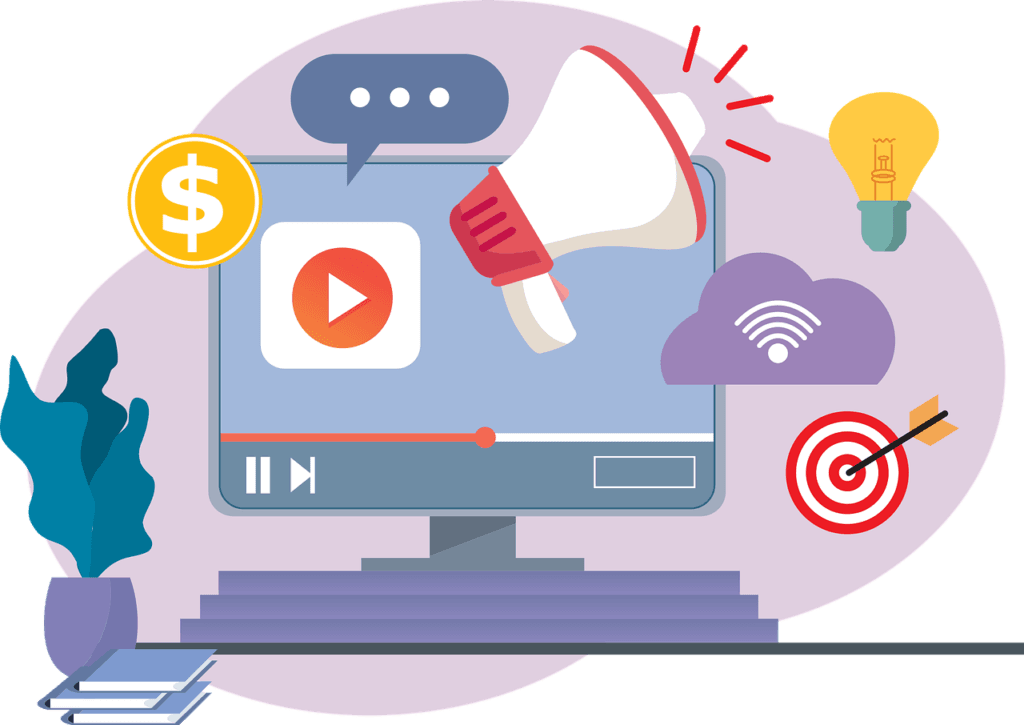In today’s digital age, social media is more than just a way to stay connected with friends and share photos. It has become a powerful tool for driving social action and making a real impact. Whether it’s raising awareness about critical issues, mobilizing communities for change, or fundraising for important causes, social media can be a catalyst for positive action. This article will explore how you can use social media to drive social action projects effectively, offering engaging, tactical, and actionable advice to help you make a difference.
Understanding Your Cause
To effectively use social media to drive social action projects, it’s crucial to have a deep understanding of your cause. This foundational step ensures that your efforts are focused, relevant, and impactful. Here are some additional strategies to enhance your understanding of your cause, tailored for startup founders looking to make a significant impact.
Conducting Thorough Research
Begin by conducting comprehensive research on your cause. Understand its history, key issues, current challenges, and the existing efforts being made to address it. This knowledge will inform your strategy and help you create content that is accurate and compelling.
For example, if you are advocating for mental health awareness, research statistics on mental health conditions, current treatment options, and the social stigma surrounding mental health. Look into successful campaigns and initiatives to understand what has worked in the past and what gaps still exist.
Engaging with Experts
Connecting with experts in your field can provide valuable insights and enhance your credibility. Reach out to academics, industry professionals, and other organizations working on similar issues. Their expertise can guide your strategy and ensure that your content is well-informed.
Consider hosting webinars or live Q&A sessions with these experts on your social media platforms. This not only provides valuable information to your audience but also positions your project as a reputable and knowledgeable entity in your field.
Listening to the Community
Understanding the perspectives and needs of the community you aim to help is critical. Engage with the people directly affected by the issue through surveys, focus groups, and social media interactions.
Create opportunities for your audience to share their stories and experiences. This could be through social media campaigns encouraging followers to post their stories using a specific hashtag or through anonymous surveys. Use this feedback to tailor your content and initiatives to better meet their needs.
Mapping Stakeholders

Identify all the stakeholders involved in or affected by your cause. This includes not only the direct beneficiaries but also other organizations, policymakers, and potential supporters.
Create a stakeholder map to visualize these connections. This will help you understand the broader landscape and identify potential partners and allies. Engage with these stakeholders through social media to build relationships and collaborate on initiatives.
Setting SMART Goals
Setting Specific, Measurable, Achievable, Relevant, and Time-bound (SMART) goals is crucial for the success of your social action project. Clearly defined goals will guide your strategy and provide benchmarks to measure your progress.
For example, instead of setting a vague goal like “raise awareness,” set a SMART goal such as “increase website traffic by 20% over the next three months by publishing weekly blog posts about mental health awareness.” This specificity helps focus your efforts and makes it easier to track your success.
Creating a Mission Statement
A clear and compelling mission statement communicates the purpose and goals of your social action project. It should be concise, memorable, and inspiring, serving as a guiding star for your efforts.
Draft a mission statement that succinctly describes what you aim to achieve and why it matters. Share this mission statement on your social media profiles, website, and other communication channels to consistently reinforce your purpose.
Identifying Key Messages
Develop key messages that convey the core points of your cause. These messages should be clear, compelling, and consistent across all your social media platforms.
For instance, if your cause is environmental conservation, your key messages might include the importance of reducing waste, the benefits of renewable energy, and the impact of deforestation. These messages should be reflected in your posts, videos, and other content to ensure a cohesive narrative.
Utilizing Data and Analytics
Leverage data and analytics to understand the impact of your cause and inform your strategy. Collect and analyze data on the scope of the issue, demographic information, and the effectiveness of various interventions.
Use this data to create compelling content that highlights the urgency and importance of your cause. For example, share infographics or data visualizations that illustrate key statistics and trends. This not only educates your audience but also provides evidence to support your advocacy efforts.
Developing a Content Calendar
Planning your content in advance ensures consistency and helps you stay organized. Develop a content calendar that outlines what you will post, when, and on which platforms.
Include a mix of content types, such as educational posts, personal stories, updates on your progress, and calls to action. Align your content with important dates and events related to your cause to maximize relevance and engagement. For example, if your cause is health-related, plan posts around World Health Day or Mental Health Awareness Month.
Creating Engaging Content
Once you have a clear understanding of your cause and audience, the next step is to create engaging content that captures attention and encourages action. Here are some strategies to help you craft compelling content for your social action project.
Storytelling
Storytelling is a powerful way to connect with your audience on an emotional level. Share stories that highlight the impact of your cause and the difference it can make. Personal stories, in particular, can be very effective in eliciting empathy and support.
For example, if you’re working on a project to support homeless individuals, share personal stories of those who have been helped by your efforts. Use quotes, photos, and videos to bring these stories to life. Highlight the challenges they’ve faced and how your project has made a positive impact.
Visual Content
Visual content is highly engaging and can quickly capture attention. Use high-quality photos, videos, infographics, and graphics to convey your message. Visual content is especially effective on platforms like Instagram, Facebook, and Twitter.
For instance, create infographics that explain key statistics and facts about your cause. Use videos to document events, share updates, and provide behind-the-scenes looks at your project. Photos of volunteers in action, beneficiaries, and events can also help humanize your cause and make it more relatable.
Call to Action
Every piece of content you share should include a clear call to action. Tell your audience exactly what you want them to do, whether it’s donating, signing a petition, attending an event, or sharing your post.
Make your call to action specific and actionable. For example, instead of saying “Support our cause,” say “Donate $10 to provide a meal for a homeless individual.” Use action-oriented language and make it easy for your audience to follow through by providing links and instructions.
Leveraging Social Media Platforms
To effectively drive social action projects, leveraging various social media platforms is crucial. Each platform has its unique features and audience, offering different opportunities for engagement and impact. Here are some additional strategies to help you maximize the potential of each platform, with a focus on strategic and actionable advice for startup founders.
Facebook remains a versatile platform for sharing various types of content and building a community around your cause. Here’s how to make the most of it:
Utilize Facebook Groups: Create a Facebook Group dedicated to your social action project. This allows for more focused discussions and community building. Encourage members to share their stories, experiences, and ideas. Regularly post updates, relevant articles, and event announcements. Use group features like polls and live videos to engage members and gather feedback.
Host Facebook Live Events: Use Facebook Live to host events such as Q&A sessions, panel discussions, and live fundraisers. Promote these events in advance to maximize attendance. During the live sessions, interact with viewers by answering their questions and acknowledging their comments in real time. This fosters a sense of community and makes your audience feel involved.
Leverage Facebook Ads: Invest in targeted Facebook ads to reach a wider audience. Use Facebook’s robust targeting options to reach people who are most likely to be interested in your cause. Create compelling ad content with strong calls to action, such as donating or signing a petition. Monitor ad performance and adjust your strategy based on the results.
Instagram’s visual nature makes it ideal for sharing engaging content related to your social action project. Here are some strategies to enhance your Instagram presence:
Create Instagram Stories Highlights: Use Instagram Stories to share real-time updates, behind-the-scenes content, and short educational snippets. Save these stories in Highlights on your profile to keep important content easily accessible to your followers. Organize Highlights by themes, such as “Success Stories,” “Volunteer Opportunities,” and “Fundraising Events.”
Engage with Instagram Reels: Leverage Instagram Reels to create short, impactful videos that highlight key aspects of your project. Use trending sounds and hashtags to increase visibility. Reels can include content like quick tutorials, success stories, or calls to action. Engage with viewers by responding to comments and encouraging them to share your Reels.
Collaborate with Influencers: Partner with Instagram influencers who align with your cause. Influencers can help amplify your message and reach new audiences. Work with them to create authentic content that showcases their support for your project. For example, an influencer could share a personal story related to your cause or participate in a fundraising challenge.
Twitter is perfect for real-time updates and engaging with a broader audience. Here’s how to use Twitter effectively for your social action project:
Participate in Twitter Chats: Join or host Twitter chats related to your cause. These are scheduled conversations that use a specific hashtag. Participate in existing chats to share your expertise and connect with others in your field. Consider hosting your own chat to engage your followers and discuss important topics related to your project.
Use Threads for Storytelling: Utilize Twitter threads to tell longer stories or share detailed information. Threads allow you to connect multiple tweets, creating a cohesive narrative. Use threads to share success stories, explain complex issues, or provide updates on your project. Make each tweet engaging and include visuals to enhance the content.
Engage with Trending Hashtags: Stay updated on trending hashtags and join relevant conversations. Engaging with popular hashtags can increase your visibility and attract new followers. When using trending hashtags, ensure your content is relevant and adds value to the conversation. Avoid spamming or appearing disingenuous.
LinkedIn is ideal for connecting with professionals and organizations. Here’s how to leverage LinkedIn for your social action project:
Share Thought Leadership Content: Publish long-form articles on LinkedIn Pulse to share your insights and expertise on topics related to your cause. These articles can establish you as a thought leader and attract the attention of professionals and organizations. Focus on providing valuable, in-depth content that educates and inspires your audience.
Network with Industry Leaders: Connect with industry leaders and organizations that share your goals. Engage with their content by liking, commenting, and sharing. Join relevant LinkedIn Groups to participate in discussions and share your knowledge. Building a network of like-minded professionals can open doors to new opportunities and collaborations.
Highlight Partnerships and Collaborations: Use LinkedIn to showcase your partnerships and collaborations. Share updates about joint initiatives, events, and achievements. Tag your partners in posts to increase visibility and show appreciation for their support. Highlighting these collaborations can enhance your credibility and demonstrate the impact of your collective efforts.
YouTube
YouTube’s video-centric platform offers a unique opportunity to create engaging, in-depth content. Here’s how to maximize your impact on YouTube:
Create Educational Series: Develop a series of educational videos that delve into different aspects of your cause. Each video can focus on a specific topic, such as the history of your cause, current challenges, and ways people can get involved. Use engaging visuals, clear explanations, and strong storytelling to keep viewers interested.
Utilize YouTube Live: Host live events on YouTube to engage with your audience in real-time. Live events can include webinars, panel discussions, and virtual fundraisers. Promote these events across your social media channels to attract a larger audience. During the live stream, interact with viewers through live chat and encourage them to participate in the conversation.
Optimize for Search: Optimize your video titles, descriptions, and tags to improve searchability on YouTube. Use relevant keywords to help your videos appear in search results. Create compelling thumbnails and titles to attract clicks. Include calls to action in your videos and descriptions, guiding viewers to take specific actions, such as visiting your website or donating.

Building a Community
One of the most effective ways to drive social action projects is by building a strong, engaged community around your cause. Here are some strategies to help you create and nurture this community.
Creating Groups and Forums
Create dedicated groups or forums on platforms like Facebook and Reddit where your supporters can join, share ideas, and stay updated on your projects. These groups can serve as a hub for discussion, collaboration, and mutual support.
Encourage active participation by posting regularly, asking questions, and sparking discussions. Share exclusive content, updates, and behind-the-scenes looks with group members to make them feel valued and involved.
Hosting Live Events
Live events are a great way to engage with your audience in real time. Host webinars, Q&A sessions, or virtual town halls to discuss your cause, provide updates, and answer questions.
Promote these events across your social media channels to maximize attendance. During the event, encourage viewers to participate by asking questions and sharing their thoughts. Follow up with a summary and key takeaways to keep the conversation going.
Collaborating with Influencers and Partners
Collaborating with influencers and partners can amplify your message and reach a wider audience. Identify influencers and organizations that share your values and goals, and reach out to propose collaborations.
For example, you could partner with a well-known environmental influencer to co-host a live event or create a joint campaign. Leverage their audience and credibility to boost your visibility and attract new supporters.
Measuring and Celebrating Success
For any social action project, measuring and celebrating success is essential. It not only helps you understand the impact of your efforts but also keeps your team motivated and your supporters engaged. For startup founders, this process is crucial to sustain momentum and ensure continuous improvement. Here are some strategic and actionable ways to measure and celebrate your success in driving social action projects using social media.
Setting Clear Metrics and KPIs
Begin by defining clear metrics and Key Performance Indicators (KPIs) that align with your goals. These metrics will help you track progress and evaluate the effectiveness of your social media strategy.
Common metrics to consider include engagement rate, follower growth, website traffic, conversion rates (such as donations or petition signatures), and reach. For instance, if your goal is to increase awareness, metrics like reach and impressions are crucial. If fundraising is your goal, track the number of donations and the total amount raised.
Using Analytics Tools
Leverage social media analytics tools to gather detailed insights into your performance. Platforms like Facebook Insights, Instagram Analytics, and Twitter Analytics provide valuable data on how your content is performing.
Regularly review these analytics to identify trends and patterns. For example, if you notice that video content consistently receives higher engagement, you might decide to focus more on creating videos. Use these insights to adjust your strategy and optimize your efforts for better results.
Conducting Surveys and Feedback Sessions
Gather direct feedback from your audience to understand their perspectives and experiences. Conduct surveys or feedback sessions to collect qualitative data that complements your quantitative metrics.
Create simple surveys using tools like Google Forms or SurveyMonkey, and share them through your social media channels. Ask questions about what types of content they find most valuable, their level of satisfaction with your initiatives, and suggestions for improvement. Use this feedback to refine your strategy and address any concerns.
Celebrating Milestones and Achievements
Celebrate your milestones and achievements with your audience to keep them engaged and motivated. Acknowledging progress not only boosts morale but also reinforces the impact of their support.
Share updates on reaching significant milestones, such as hitting a fundraising target, achieving a certain number of followers, or completing a major project. Use engaging visuals, videos, and stories to highlight these accomplishments. For example, create a video montage showcasing the journey and key moments leading up to the milestone.
Showcasing Success Stories
Success stories are powerful tools for illustrating the impact of your social action project. Share detailed stories of individuals or communities that have benefited from your efforts.
Create content that highlights these success stories using testimonials, before-and-after photos, and videos. For example, if your project focuses on providing clean water to communities, share stories of families who now have access to clean water and how it has improved their lives. Feature these stories on your social media profiles, website, and newsletters to inspire and engage your audience.
Creating Impact Reports
Develop comprehensive impact reports that summarize your achievements and the overall impact of your project. These reports can be shared with your supporters, partners, and stakeholders to demonstrate accountability and transparency.
Include key metrics, success stories, financial summaries, and future goals in your impact report. Use visuals like charts, graphs, and infographics to make the data more accessible and engaging. Share the report as a downloadable PDF on your website and promote it through your social media channels.
Engaging Your Supporters
Engage your supporters by acknowledging their contributions and making them feel part of your journey. Use social media to thank them publicly and share their stories.
Create posts that highlight top donors, active volunteers, or loyal followers. Share their stories and how they have contributed to your cause. For example, feature a “Supporter of the Month” series where you spotlight a different supporter each month. This not only shows appreciation but also encourages others to get involved.
Hosting Celebration Events
Host virtual or in-person events to celebrate your successes and bring your community together. These events can be a way to thank your supporters, share updates, and inspire future action.
Plan events like virtual town halls, Q&A sessions, or celebration parties. Use these opportunities to showcase your achievements, share success stories, and outline future goals. Encourage attendees to participate and share their thoughts. Promote the events on your social media profiles to maximize attendance and engagement.
Adapting Based on Learnings
Finally, use the insights gained from measuring your success to adapt and improve your strategy. Identify what worked well and what could be improved, and use this knowledge to inform your future efforts.
For example, if you found that storytelling posts received high engagement, plan to incorporate more stories into your content strategy. If certain types of content underperformed, analyze why and consider new approaches. Continuous learning and adaptation are key to sustaining success and driving ongoing impact.
Adapting and Evolving Your Strategy
The digital landscape is ever-changing, and staying adaptable is crucial for the success of your social action projects. As a startup founder, continuously refining your approach based on feedback and emerging trends will ensure your efforts remain effective and impactful. Here are some strategic and actionable ways to adapt and evolve your social media strategy for driving social action projects.
Monitoring Trends and Innovations
Stay updated on the latest social media trends and technological innovations. Platforms regularly introduce new features that can enhance your engagement and outreach efforts.
For instance, TikTok introduced longer video formats and Instagram rolled out Reels and Guides. Keep an eye on these updates and consider how they can be integrated into your strategy. If a new feature aligns well with your goals, experiment with it to see how it resonates with your audience.
Regularly Reviewing Analytics
Regularly reviewing your social media analytics helps you understand what’s working and what’s not. Use tools like Facebook Insights, Instagram Analytics, and Twitter Analytics to track key metrics such as engagement rates, reach, and conversion rates.
Analyze this data to identify patterns and trends. For example, if you notice that videos get more engagement than photos, you might decide to focus more on video content. Adjust your strategy based on these insights to optimize your efforts and achieve better results.
Gathering and Implementing Feedback
Actively seek feedback from your audience to understand their needs and preferences. Use surveys, polls, and direct messages to gather their opinions on your content and initiatives.
For example, run a poll on Instagram Stories asking your followers what type of content they find most valuable. Use the feedback to refine your content strategy. If your audience prefers educational content, focus on creating more informative posts and videos. Regularly implementing feedback shows your audience that you value their input and are committed to serving their needs.
Experimenting with Content Formats
Don’t be afraid to experiment with different content formats to see what resonates best with your audience. Try various types of posts, such as infographics, live videos, podcasts, and user-generated content.
For instance, if you haven’t tried live streaming, consider hosting a live Q&A session or a virtual event. Monitor the engagement and feedback from these experiments to determine which formats work best for your cause. Continually testing new ideas keeps your content fresh and engaging.
Engaging with Emerging Platforms
New social media platforms frequently emerge, offering fresh opportunities for engagement. Keep an eye on rising platforms and consider establishing a presence there if they align with your target audience.
For example, Clubhouse, an audio-based social network, gained popularity for its interactive discussions. If your cause benefits from in-depth conversations, consider hosting discussions on Clubhouse. Evaluate the platform’s potential and its fit with your goals before fully committing.
Collaborating with New Influencers
Influencer marketing is a dynamic field, with new influencers emerging regularly. Collaborate with influencers who align with your cause and have a strong connection with their audience.
Research up-and-coming influencers who share your values and goals. Reach out to them for partnerships, such as co-hosting events or creating joint content. Collaborating with new influencers can introduce your cause to fresh audiences and expand your reach.
Staying Agile with Crisis Management

Being prepared for crises is essential for any social action project. Develop a crisis management plan that allows you to respond quickly and effectively to any negative events or feedback.
For example, if your project faces criticism, address the concerns transparently and promptly. Use social media to communicate your response, show empathy, and outline the steps you’re taking to resolve the issue. Staying agile in crisis situations helps maintain your credibility and trust with your audience.
Scaling Successful Initiatives
Identify the initiatives that have been most successful and consider scaling them. This might involve increasing the frequency of certain types of content, expanding successful campaigns, or investing more resources in high-impact areas.
For example, if a particular fundraising campaign exceeded its goals, analyze what made it successful. Was it the compelling storytelling, the strong call to action, or the collaboration with influencers? Use these insights to replicate and scale similar initiatives, ensuring sustained impact and growth.
Networking and Learning from Peers
Join online communities and networks where you can connect with other social action project leaders. Share experiences, learn from their successes and challenges, and stay informed about best practices.
Participate in webinars, conferences, and workshops related to social media and digital marketing. Learning from peers and experts helps you stay ahead of trends and continuously improve your strategy.
Conclusion
Using social media to drive social action projects is a powerful way to create positive change and engage a wide audience. By understanding your cause, creating compelling content, leveraging the unique features of various social media platforms, and continuously adapting your strategy, you can maximize your impact and achieve your goals.
Start by defining your goals and understanding your audience to ensure your efforts are focused and relevant. Use storytelling, visual content, and clear calls to action to engage your audience and encourage them to take action. Leverage platforms like Facebook, Instagram, Twitter, LinkedIn, and YouTube to reach different segments of your audience and make the most of each platform’s strengths.
Read Next:
- Tax Identification for Freelancers in the UK: A Step-by-Step Guide
- Ensuring Legal Compliance: How to Register Your Company in the UK
- Bitrix24 vs LogicalDOC: The Best Document Management Tool for You
- What Every UK Business Needs to Know About Tax Identification
- Bitrix24 vs Quip: The Best Document Management Tool for You






















Comments are closed.